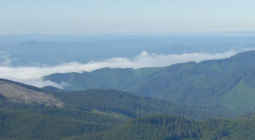Activists fight to save 550-year-old oak threatened by new Shrewsbury road.
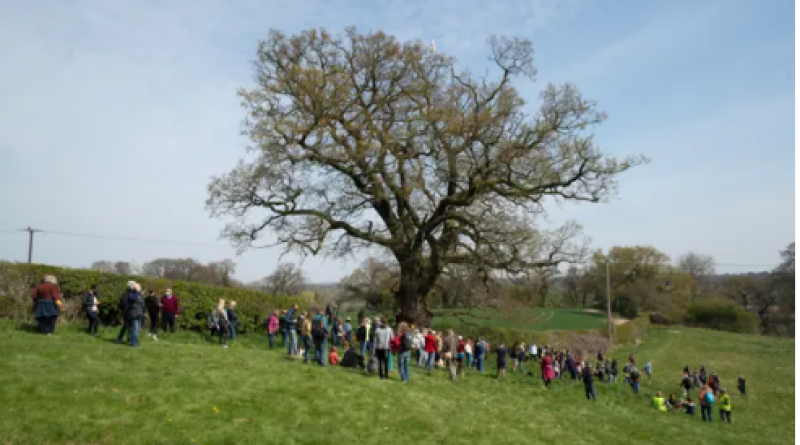
Objectors say relief road contradicts council’s net zero target and will damage local wildlife sites.
A 550-year-old tree known as “Darwin’s oak”, 4km of hedgerows and an internationally-renowned wetland are threatened by a new road around Shrewsbury, which has gathered more than 1,000 formal objections.
The £84.3m Shrewsbury north-west relief road planned by Shropshire council is becoming a local election issue, with the Conservative-controlled council arguing that the scheme, which completes a ring-road around the medieval town, will alleviate traffic and unlock land for housing.
But a growing number of objectors to the application – which the council has submitted and its planning committee will determine after the May elections – say that the four-mile road, including a 668-metre-long viaduct over the River Severn, contradicts the council’s declaration of the climate emergency and net zero by 2030 target.
Opponents also argue that the road will ruin a “green wedge” of unspoilt valley beside Shrewsbury and say that the coronavirus pandemic has destroyed the business case for the road.
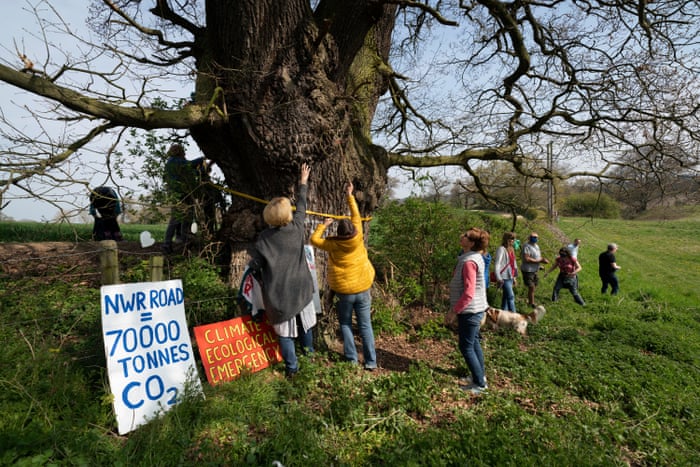
The oak is 550 years old, and may have been enjoyed by Charles Darwin. Photograph: Jon Super/The Guardian
The road will pass within metres of four local wildlife sites, an ancient woodland and Hencott Pool, a Site of Special Scientific Interest, and the internationally important Ramsar wetland. Opponents say the road will damage these sites with nitrogen oxides and other atmospheric pollution, add noise pollution, be a visual eyesore and put Shrewsbury’s drinking water supplies at risk.
A protest walk on Sunday 18 April highlighted the road’s destruction of at least 29 irreplaceable “veteran” trees, including a 550-year-old oak that may have been enjoyed by Charles Darwin, who was born and raised in Shrewsbury.
When “T58 fell” was recently discovered spray-painted on the ancient oak’s trunk, anti-road campaigners believed it confirmed the council’s plans to destroy it. But the council says the paint marks were not made by it or any of its contractors.
Rob McBride, an ancient-tree advocate, said: “Standing under this tree was a moment where you think: ‘What are we doing to our planet?’ Councils are really lagging behind current thinking. Darwin may have sat under this tree and considered the evolution of man. The people making the decision on this road are dinosaurs.”
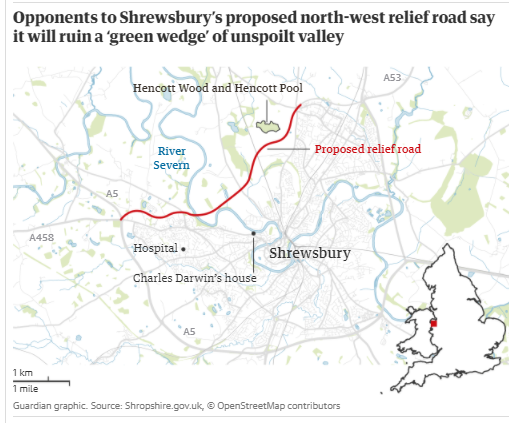
Shropshire council said no decision had yet been taken on whether or not to fell the Darwin oak. The council is proposing to plant 345,000 new trees – one for every resident in Shropshire – as part of its action for climate change.
Mark Broomfield, an air quality consultant and author of Every Breath You Take, warned that if the council gave permission for the road it was vulnerable to legal challenge because of what he judged was an inadequate assessment of the air pollution impacts on Hencott Pool, which is protected under EU and UK law.
“If the council is not confident that there are no impacts, the regulations say they shall not approve it,” said Broomfield, a Shrewsbury resident who has objected to the scheme. “The road is a terrible solution to a problem that has much cheaper and less damaging solutions.”
Groups objecting to the road include Shropshire Wildlife Trust, CPRE (formerly the Campaign to Protect Rural England), Bicton parish council and Better Shrewsbury Transport. Shrewsbury’s Conservative MP, Daniel Kawczynski, has been a long-term supporter of the road.
According to Emma Bullard of Better Shrewsbury Transport, the council has pushed for the road for more than 30 years but never succeeded because it lacked central government funding until 2019, when a £54.4m grant materialised.

“It won’t work, it will be incredibly destructive in terms of wildlife and carbon and we can’t afford it,” she said. “It’s this ‘we need roads for growth’ idiocy. They say it will enable more walking and cycling in the town centre but without any proof. The project has acquired a hideous life of its own.”
Anti-road campaigners point out that Hereford recently cancelled their bypass after concluding that congestion could be alleviated by measures to promote walking, cycling and bus transport at a fraction of the cost.
The council must spend at least £17m – plus cost overruns – on the road, some of which will come from the community infrastructure levy, money collected from housing developers across the county.
Shropshire council’s leader, Peter Nutting, has said funding is “not an issue” because the project will open up about 55 acres of “prime development land” owned by the council which he said it can sell for about £500,000 an acre.
According to the council, it is “following current Department for Transport modelling requirements around business case development in traffic forecasting” and will re-run the numbers if this is reviewed post-Covid.
A council spokesperson said: “Increased local trips by public transport, walking and cycling may be a larger part of the post-Covid situation and the road will still facilitate this with reduced congestion in the town centre.”
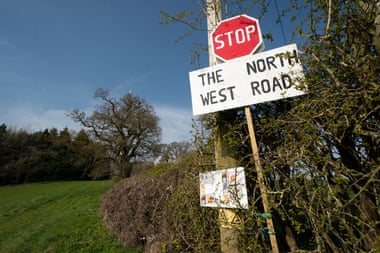
Of the impacts on Hencott Pool, the council said the road had been moved south so the wetland was not considered an affected site in planning terms.
Of claims that the road contradicts the council’s net zero goal, the spokesperson said the road’s impact was accommodated within its wider carbon management and offsetting, and a full study would be published shortly.
The spokesperson added: “The Shrewsbury north-west relief road is currently being consulted upon as part of the planning application process and a decision is not expected until later in the year. In the meantime, we very much welcome the public’s views as part of that process.”
26 April 2021
The Guardian


